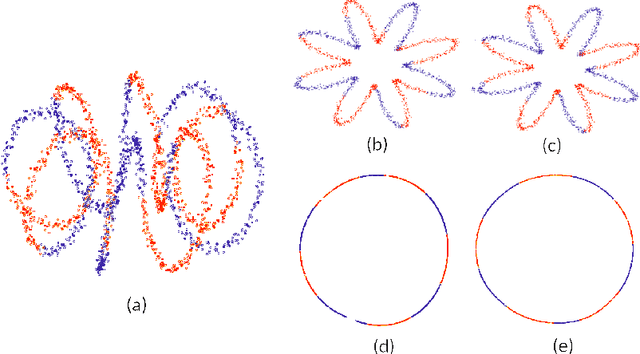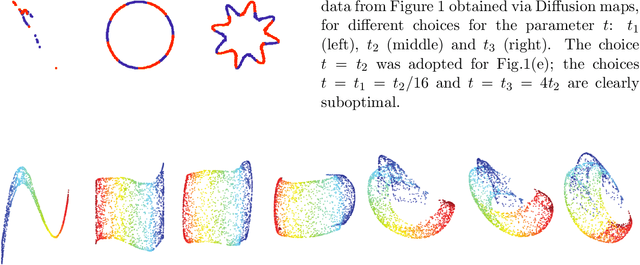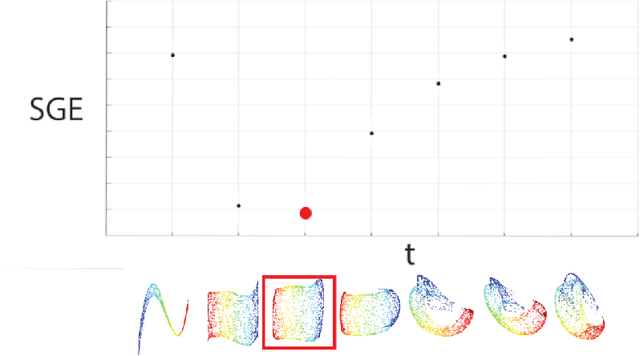Shan Shan
Secure Multicast Communications with Pinching-Antenna Systems (PASS)
Sep 19, 2025Abstract:This article investigates secure multicast communications in pinching-antenna systems (PASS), where pinching beamforming is enabled by adaptively adjusting pinching antenna (PAs) positions along waveguides to improve multicast security. Specifically, a PASS-based secure multicast framework is proposed, in which joint optimization of transmit and pinching beamforming is conducted to maximize the secrecy multicast rate. i) For the single-group multicast scenario, an alternating optimization (AO) framework is employed, where the pinching beamformer is updated via an element-wise sequential optimization method. The transmit beamformer is designed via a semidefinite relaxation (SDR) formulation for an upper-bound solution, while a Dinkelbach-alternating direction method of multipliers (ADMM) offers a low-complexity alternative. ii) For the multi-group multicast scenario, transmit and pinching beamformers are alternately optimized under a majorization-minimization (MM) framework. The transmit beamformer is obtained via SDR or an efficient second-order cone programming (SOCP) method, while the pinching beamformer is updated through MM-based element-wise sequential update strategy. Numerical results are provided to demonstrate that: (i) PASS consistently outperform conventional fixed-location antenna architectures in terms of secrecy performance across various configurations; and (ii) the performance advantage of PASS over fixed-location architectures becomes more significant with increased service region, larger antenna arrays, and higher user and eavesdropper densities.
From Correlation to Causation: Understanding Climate Change through Causal Analysis and LLM Interpretations
Dec 21, 2024Abstract:This research presents a three-step causal inference framework that integrates correlation analysis, machine learning-based causality discovery, and LLM-driven interpretations to identify socioeconomic factors influencing carbon emissions and contributing to climate change. The approach begins with identifying correlations, progresses to causal analysis, and enhances decision making through LLM-generated inquiries about the context of climate change. The proposed framework offers adaptable solutions that support data-driven policy-making and strategic decision-making in climate-related contexts, uncovering causal relationships within the climate change domain.
Human Limits in Machine Learning: Prediction of Plant Phenotypes Using Soil Microbiome Data
Jun 19, 2023Abstract:The preservation of soil health has been identified as one of the main challenges of the XXI century given its vast (and potentially threatening) ramifications in agriculture, human health and biodiversity. Here, we provide the first deep investigation of the predictive potential of machine-learning models to understand the connections between soil and biological phenotypes. Indeed, we investigate an integrative framework performing accurate machine-learning-based prediction of plant phenotypes from biological, chemical and physical properties of the soil via two models: random forest and Bayesian neural network. We show that prediction is improved, as evidenced by higher weighted F1 scores, when incorporating into the models environmental features like soil physicochemical properties and microbial population density in addition to the microbiome information. Furthermore, by exploring multiple data preprocessing strategies such as normalization, zero replacement, and data augmentation, we confirm that human decisions have a huge impact on the predictive performance. In particular, we show that the naive total sum scaling normalization that is commonly used in microbiome research is not the optimal strategy to maximize predictive power. In addition, we find that accurately defined labels are more important than normalization, taxonomic level or model characteristics. That is, if humans are unable to classify the samples and provide accurate labels, the performance of machine-learning models will be limited. Lastly, we present strategies for domain scientists via a full model selection decision tree to identify the human choices that maximize the prediction power of the models. Our work is accompanied by open source reproducible scripts (https://github.com/solislemuslab/soil-microbiome-nn) for maximum outreach among the microbiome research community.
Diffusion Maps : Using the Semigroup Property for Parameter Tuning
Mar 06, 2022



Abstract:Diffusion maps (DM) constitute a classic dimension reduction technique, for data lying on or close to a (relatively) low-dimensional manifold embedded in a much larger dimensional space. The DM procedure consists in constructing a spectral parametrization for the manifold from simulated random walks or diffusion paths on the data set. However, DM is hard to tune in practice. In particular, the task to set a diffusion time t when constructing the diffusion kernel matrix is critical. We address this problem by using the semigroup property of the diffusion operator. We propose a semigroup criterion for picking t. Experiments show that this principled approach is effective and robust.
 Add to Chrome
Add to Chrome Add to Firefox
Add to Firefox Add to Edge
Add to Edge